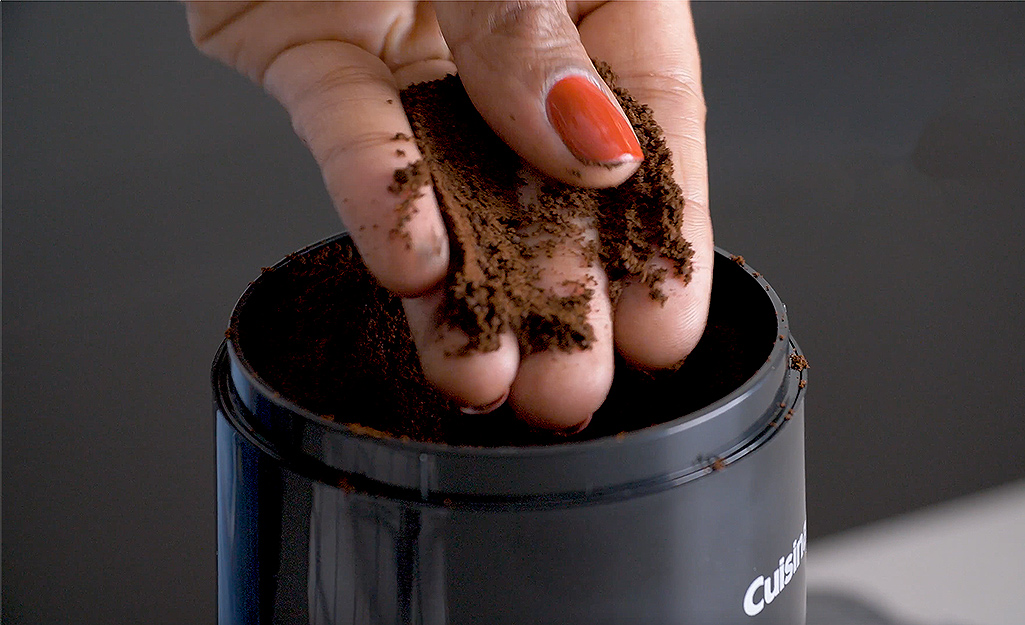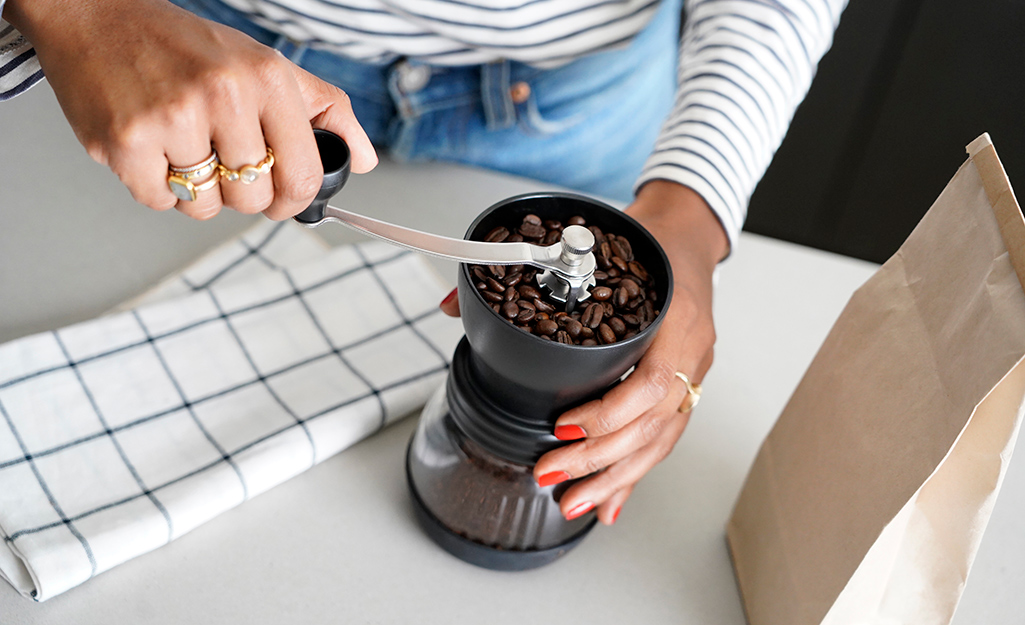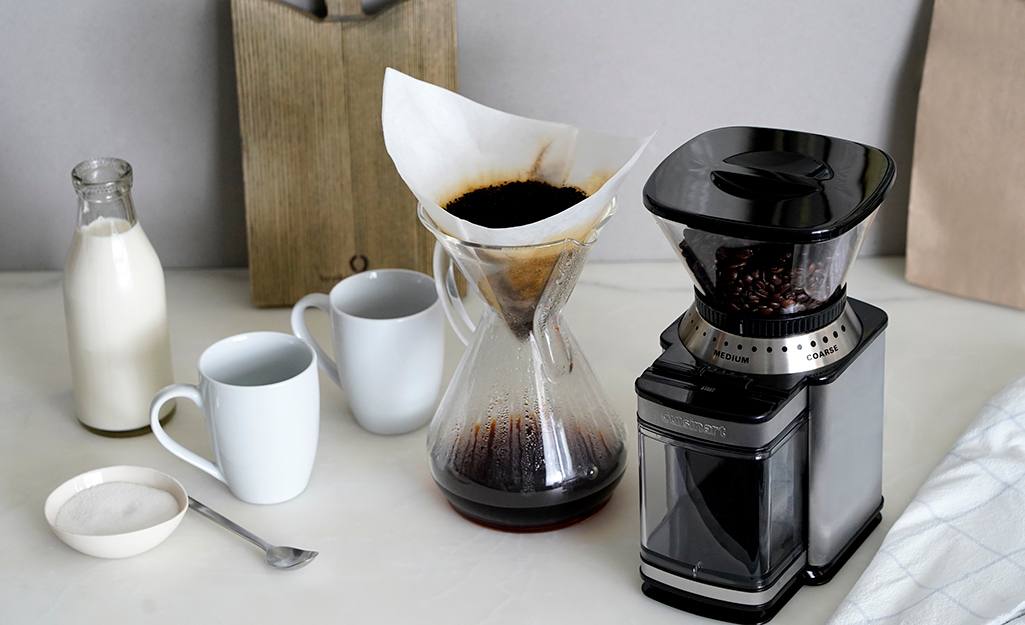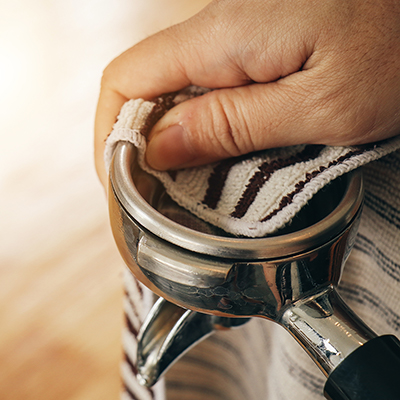The Best Coffee Grinders to Boost Your Coffee's Flavor

Last updated September 7, 2023
Many homeowners start their day with a freshly brewed cup of coffee. With how popular this hot drink is, it’s no wonder that artisanal beans and artful methods of home brewing are becoming more common. Read on to learn the benefits of grinding your own beans fresh and what to look for in the best coffee grinders to boost your coffee’s flavor.
Table of Contents
Why Grind Coffee Beans?
Understand Size
Blade Grinders vs. Burr Grinders
Materials, Settings & Accessories
Why Grind Coffee Beans?

To get the best grounds, you need to select a tool that will treat your beans right. But first, why grind at home in the first place?
Coffee beans give us the powerful elixir thanks in large part to their oil content. For the best tasting coffee with all those covetable complex aromas and flavors, that oil needs to be released evenly and must be fresh.
The second you grind coffee beans, a scent is released. These notes can become dull after a mere fifteen minutes, so while coffee made with pre-ground beans will still pack the caffeine your morning may need, it may be stale and lack flavor. If you’ve been using pre-ground coffee and feeling like your coffee could use a flavor boost, this is the step to target.
Bear in mind, it is important to consider your own lifestyle when selecting a grinder. If you choose the one best for your routine, you’ll be more likely to grind fresh. Do you have ample counter space? Will you be making coffee each and every day? Are you serving a crowd or just yourself? These factors will also impact price and the size of the machine. There’s no need to splurge on a grinder if you just aim to make a single cup every once in a while. The frequency with which you plan to use the machine will also inform price point, which should correspond to durability.
Understand Size

Beyond giving you the freshest cup possible, a grinder will allow you to control the grinds’ size. This is important because each tool used to create coffee requires a different sized ground. The best coffee grinders for a French press, for example, will give you grinds that are relatively large. Chances are, pre-ground coffee grinds will either be too coarse or too fine for your chosen method. If you like to switch it up between an individually sized pour-over and a crowd-serving percolator, you will want to be able to easily modify the size of the grind.
Here is a summary of the ideal coarseness for the most common brewing methods:
- French press: coarse grind
- AeroPress: medium grind
- Pour-over: medium-fine grind
- Chemex: medium-coarse
- Automatic drip: medium
- Cold brew: extra-coarse
- Stovetop: fine
- Espresso: fine
- Percolator: coarse
Grind size is also related to extraction, or the process through which flavor is pulled from beans. You can test how different coarseness settings pair with your coffee maker. Avoid under-extraction, which results from beans not being ground enough, and over-extra, an outcome of overgrinding. The best coffee grinders will create neither “boulders” (large grounds that result in a sour taste) nor “fines” (small grounds that permeate bitterness), and will instead get you to that “just right” place.
Particle Size & Consistency
Size is an important feature to consider. Both size of the machine itself and the particle outcome. You must be diligent to select a coffee grinder that produces consistently sized grounds, especially if you are an espresso drinker – particle size and finesse is extremely important here. The best espresso grinders will give you super-fine grounds that are uniform in size. Espresso is brewed using pressure, meaning hot water is forced through the grounds. If particles are too fine, the water won’t get through. If they are too coarse, it will flow through without ample extraction. If you have a combo of the two, you will end up with the worst of both worlds. So, you need a machine that will give you grounds that are appropriately sized and are all a consistent size, particularly for espresso.
Blade Grinders vs. Burr Grinders

Tip: Multifunctional and easy to store, blade grinders are also great for grinding spices, which lose flavor as they get less fresh.
There are two main types of coffee grinders available to the home brewer: blade coffee grinders and burr coffee grinders.
- Blade Grinders
As the name suggests, blade grinders use blades to slice coffee beans into multiple parts, eventually becoming grinds. This method uses consistent speed and force to break apart beans. Rather than choosing a preferred grind size, you control the outcome through time – grind for a short time, grounds will not breakdown so much; grind for a longer time and grounds will be fine. Since these have no size setting, expect to find yourself with a fair number of “boulders” and “fines.” If you grind for too long, you risk burning the coffee.Given this lack of precision, blade grinders are affordable. For those who are new to home brewing or don’t make coffee often, these are ideal. You won’t get the best cup using a blade grinder, but grinds will be fresh and you will be able to control their size somewhat.
An added blade grinder bonus is that the tool is typically on the smaller size, another perk for those who want to be able to store and pull out of a cupboard on special occasions.
- Burr Grinders
Burr coffee grinders use burrs, or serrated plates, to create grounds. Within a burr grinder’s body are two burrs, one that is attached to a motor and one that rotates. The user sets a desired size, and the two surfaces come together to grind the contained coffee beans to the set coarseness. This means the best burr coffee grinders give you a consistent outcome. It also means that this advanced technology will cost you a bit more than a blade grinder.
A burr grinder, given its purposeful inner workings, will be heavier and more cumbersome than a blade grinder. They can be either manual or automatic. Manual coffee grinders work a bit more slowly. As a result, some argue that the best manual coffee grinders give you the most nuanced flavor possible, but if you want good flavor more quickly, then automatics work just fine. If you want to use the best manual coffee grinder, make sure you select one that has a useful non-slip handle and base.
Within the burr grinder category, there are two subcategories, flat and conical:
- Flat Burrs: These use centrifugal force to propel beans towards the burr teeth. When adjusting the grind on a flat burr machine, you are moving the parallel disks closer together for finer grounds and further apart for coarse ground. This configuration is extremely precise (meaning more exacting flavor), so flat burrs are typically more expensive than conical burrs. They are also louder than conical burrs.
- Conical Burrs: Often times, you can manipulate the settings of these machines by the degree. Unlike the parallel flat burrs, conical burrs meet at an angle. This detail also means they last longer than a flat burr grinder.
Materials, Settings & Accessories

Tip: When using a blade grinder, take a break from grinding halfway through the process. This will keep the beans from getting too hot.
The best coffee grinders will come equipped with settings that make getting the perfect cup that much easier.
While the blades on blade coffee grinders are almost always made of stainless steel, burrs can be found in two different material options, steel and ceramic. The choice between these two options really doesn’t come down to force (they both do the trick), but more typically, conductivity. Because stainless steel conducts relatively well, burrs will heat up and cool down during the grinding process more quickly than they will with a ceramic material. Given that heat can cause a bean to spoil, arguments can be made for either sort – some prefer a material that heats slowly, others a material that cools quickly.
Ceramic burrs also typically have a longer lifespan than stainless steel because they warp less easily. However, this perk, which also gives ceramic burrs a slightly higher price point, means the material is brittle and can cause problems if you get a small stone stuck in the machine. Replacing damaged Stainless steel burrs is pretty easy, since they’re widely available; replacement ceramic burrs, on the other hand, can be harder to manage.
- Automation: The ease and functionality of an automatic burr machine cannot be understated. Look for a tool that is simple and clearly labeled. Different machines offer different degrees of portion and particle control.
- Grind Settings: The best burr coffee grinder will have a series of grind settings to choose from. The greater number of settings the machine possesses, the more expensive the machine will be. Grinders are available in stepped and stepless varieties:
- Stepped grinders have specific settings available, corresponding to common methods of brewing. A range of 18 different grind settings is plenty. With this number, you’ll be able to work with just about any coffee maker.
- Stepless grinders have more options for grind settings and allow the user to get a tailor-made grind. They are ideal for coffee drinkers who are confident in their grind selection. They provide more precision, but do require you have a clear understanding of the size of grind you need for your chosen method.
- Dosing: Some machines offer dosing, a step that comes after grinding. Grounds are dropped into a chamber that then releases into a coffee filter or receptacle when you’re ready to brew. This is a great option for consumers who hold time management above all else and they also help with controlling the mess grinds can leave.
- Heat & Speed Controls: Some high-end grinders allow you to control the speed of your grinder. This is because you actually do not want a super-speedy motor. If a grinder spins too fast, it will generate heat, which can spoil the beans. If you can’t find a model that allows you to control the speed, look for packaging that notes a “direct drive grinder.” This means the grinder has a low-speed motor.
- Electric Timer: This is an excellent feature of the best coffee grinders. Working off of an ability to assess the number of beans in a hopper (the compartment where beans are stored prior to grinding), machines with this capability will automatically turn off when the grinding job is done. This will extend the tool’s life span.
- Cleaning Features: The best coffee grinders come with useful cleaning brushes to make sure the experience is fuss-free. Beyond these basics, consider what will work best for you. If you need a machine that is super easy to wipe out (either by removing a hopper and grind chamber, or merely by swiping the interior itself), then that’s the grinder for you.
There are many options and features available today in coffee grinders for getting the best-tasting cup. From manual to electric, blade to burr, we offer a wide selection for all your coffee needs. The Home Depot delivers online orders when and where you need them.






























